History
 Americans are a people who have no problem speaking their minds. I suppose it all goes back to the reasons we left England in the first place. We were only allowed to believe certain things, and if we chose to be different, we could have been killed or imprisoned. It is what our nation was built on in more ways than just religion. The point was supposed to be that we were free to live our lives as we chose to, within a very few certain guidelines. For the most part, things went along smoothly…until November of 1860, when President Lincoln was elected to the presidency, that is. The people of the Deep South felt that their way of life was being threatened, in that they held slaves, and Lincoln was against slavery, as were the Northern states, or most of the people in the Northern states anyway. Of course, this whole issue brought our nation to war, a really sad thing when two sides of a nation war against each other.
Americans are a people who have no problem speaking their minds. I suppose it all goes back to the reasons we left England in the first place. We were only allowed to believe certain things, and if we chose to be different, we could have been killed or imprisoned. It is what our nation was built on in more ways than just religion. The point was supposed to be that we were free to live our lives as we chose to, within a very few certain guidelines. For the most part, things went along smoothly…until November of 1860, when President Lincoln was elected to the presidency, that is. The people of the Deep South felt that their way of life was being threatened, in that they held slaves, and Lincoln was against slavery, as were the Northern states, or most of the people in the Northern states anyway. Of course, this whole issue brought our nation to war, a really sad thing when two sides of a nation war against each other.
It is a difficult thing when so many people have such differing beliefs about the same issue. And sometimes it gets so ugly, that I have to wonder about the sanity of some people. When people burn or otherwise deface our flag, sometimes in horribly disgusting ways, or do the same to Bibles and other religious books, it is disrespectful. What I find especially disturbing is that these same people want respect for their cause or lifestyle, but they will not give the same respect for the cause or lifestyle of others. It really is a two way street. I know that a lot of people are calling for the removal of the Confederate Flag from…everywhere, but in reality it is a part of our history. We need to remember that because they lost the battle, it 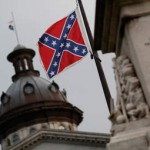 does not mean they were not brave in the fight. Lately, I have seen some shocking displays in this nation. Digging up the graves of a general and his wife, because he fought for the South, and taking shows off the air because they have a reference to a Confederate Flag in them. Political Correctness has tipped the balance of this nation to the point of insanity. It must stop, or we will have another war here. We have already had a threat of states wanting to secede from the union. It is a sad state for this great nation to be in.
does not mean they were not brave in the fight. Lately, I have seen some shocking displays in this nation. Digging up the graves of a general and his wife, because he fought for the South, and taking shows off the air because they have a reference to a Confederate Flag in them. Political Correctness has tipped the balance of this nation to the point of insanity. It must stop, or we will have another war here. We have already had a threat of states wanting to secede from the union. It is a sad state for this great nation to be in.
In the end of the Civil War, the South lost the war, the slaves were freed, and given their proper rights. No, it wasn’t the last of the battles over this issue, unfortunately, but the healing of this nation began. The eleven states that had seceded from the Union…Alabama, Florida, Georgia, Louisiana, Mississippi, South Carolina, Texas, Arkansas, North Carolina, Tennessee and Virginia, were returning one by one. Change was coming and it would slowly come to be accepted. I suppose that, as in the Civil War, the people who are fighting for their rights these days, consider the battles well worth the outcome, and maybe they are, but in many ways, we have forgotten that the people of the other side of the issue have rights too. The country was largely founded on a live and let live way of life…whether you agree with them or not. This may not be the perfect way for our nation to be, but it is as close as we can get. As with the eleven states who returned to the Union, I think it is important to consider the feeling of those who have lost the battle you felt the need to win, because in most cases, they are good people too. On this historic day, as our nation became united again, Georgia became the  last state to be readmitted to the Union. They returned, because whether they agreed with every thing this nation stood for or not, they still knew that this was a great nation, and one they wanted to be a part of. I believe that was the case of the Cowboys and Indians. We all know that the Indians lost to the cowboys, but that does not make them any less a proud people, nor does it make them any less brave. They deserve respect, as do all the people who have lost the battles that have gone on in this nation about political correctness, policy change, or the battle of the North and South. In the words of Abraham Lincoln, “A house divided against itself cannot stand.” Whether we agree with things or disagree, we must stand united…lest we forget that the rights we take from another today, could be taken from us tomorrow.
last state to be readmitted to the Union. They returned, because whether they agreed with every thing this nation stood for or not, they still knew that this was a great nation, and one they wanted to be a part of. I believe that was the case of the Cowboys and Indians. We all know that the Indians lost to the cowboys, but that does not make them any less a proud people, nor does it make them any less brave. They deserve respect, as do all the people who have lost the battles that have gone on in this nation about political correctness, policy change, or the battle of the North and South. In the words of Abraham Lincoln, “A house divided against itself cannot stand.” Whether we agree with things or disagree, we must stand united…lest we forget that the rights we take from another today, could be taken from us tomorrow.
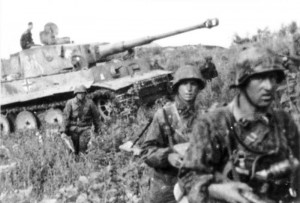 When the Germans invaded the Soviet Union in early July of 1943, they concentrated their forces near the city of Kursk in Western Russia. This was the site of a 150 mile wide Soviet resistance pocket that jutted 100 miles into the German lines. When the attack began on July 5th, the Germans had 38 divisions, of which, nearly half were armored. The Germans began their attack coming in from the north and the south, in an effort to cut off and surround the Soviet troops. Unfortunately for them, they had sorely misjudged the Soviet forces. Even though the Soviets were not really prepared for this invasion, they did have better tanks and air support than they had in previous battles. The fighting was bitter, but soon the Soviets had destroyed as much as 40 percent of the German armor, which included their new Mark VI Tiger tanks. I’m sure this must have been a shock to the Germans, who thought this tank was going to be their best tank ever, but like the Bismarck back in 1941, they found out that these new tanks were no match for what the Russians brought out.
When the Germans invaded the Soviet Union in early July of 1943, they concentrated their forces near the city of Kursk in Western Russia. This was the site of a 150 mile wide Soviet resistance pocket that jutted 100 miles into the German lines. When the attack began on July 5th, the Germans had 38 divisions, of which, nearly half were armored. The Germans began their attack coming in from the north and the south, in an effort to cut off and surround the Soviet troops. Unfortunately for them, they had sorely misjudged the Soviet forces. Even though the Soviets were not really prepared for this invasion, they did have better tanks and air support than they had in previous battles. The fighting was bitter, but soon the Soviets had destroyed as much as 40 percent of the German armor, which included their new Mark VI Tiger tanks. I’m sure this must have been a shock to the Germans, who thought this tank was going to be their best tank ever, but like the Bismarck back in 1941, they found out that these new tanks were no match for what the Russians brought out.

The Battle of Kursk was quite the battle. It involved 6,300 tanks, two million men, and 5,000 aircraft. It would be the largest tank battle in history, and it would end with the German offensive being driven back by the Soviets. The cost to the Germans was heavy, and the battle would be the beginning of the end for the Germans in Russia. The retreated as far as they were allowed, but Hitler was not really willing to let the retreat much. It was just another part of his insanity. He thought he could outlast the Russians. He had not learned from Bismarck or from Napoleon. It’s not surprising really. Hitler’s insanity honestly made him believe that he was invincible, a fatal mistake…at least in that he couldn’t accept the ultimate failure and so took his own life. The Battle of Kursk ended on July 13, 1943, and it did indeed mark the beginning of the end of the German invasion of Russia.
When I think of wars, for some reason I don’t think of tanks. Oh, I have seen the war movies and all, but tanks just seem clunky and awkward, and so not an efficient weapon of war in my mind. I suppose that if I know as much about tanks as my brother-in-law, Ron Schulenberg, who served in Desert Storm and was trained in the  use of tanks knows, I might think they were more of a serious weapon. That is something I might have to discuss with him in the near future. The weapons used in wars are varied, and each one serves a purpose. Of course, each side tries to come up with a weapon that is far better than their opponent, and in the end, it is a matter of having the best weapon between the two enemies, and which side is able to use the weapons available to them. On this day, July 13, 1943 the Germans found out that the weapons the Russians had and their ability to use them would prove to be the undoing of their invasion. In the beginning of August, the Soviets began a major offensive around the Kursk area, and within weeks the Germans were in retreat all along the eastern front.
use of tanks knows, I might think they were more of a serious weapon. That is something I might have to discuss with him in the near future. The weapons used in wars are varied, and each one serves a purpose. Of course, each side tries to come up with a weapon that is far better than their opponent, and in the end, it is a matter of having the best weapon between the two enemies, and which side is able to use the weapons available to them. On this day, July 13, 1943 the Germans found out that the weapons the Russians had and their ability to use them would prove to be the undoing of their invasion. In the beginning of August, the Soviets began a major offensive around the Kursk area, and within weeks the Germans were in retreat all along the eastern front.
 Anyone who knows much about Nazi Germany, knows that Adolf Hitler was insane. His hatred for the Jewish people was nothing less that insanity, because he had no valid reason to hate them. Nevertheless, the Holocaust did happen. Hitler did kill between five and six million Jews during his reign of terror. Many people thought that the Jews were the only target Hitler had too, but that wasn’t so. Hitler wanted to kill anyone who annoyed, inconvenienced, or even remotely bothered him. On this day, July 8, 1943, upon the German army’s invasion of Pskov, 180 miles from Leningrad, Russia, the chief of the German army general staff, General Franz Halder, records in his diary Hitler’s plans for Moscow and Leningrad: “To dispose fully of their population, which otherwise we shall have to feed during the winter.” Hitler planned to level both cities, or at least kill everyone in them, because he didn’t want to have to feed the prisoners during the long winter months! And for no other reason. Most armies at least set up prisoner of war camps, which while not terribly humane, gave some semblance of an attempt to be humane. I know that everyone complains about how the United States treats prisoners of war, but there really is no comparison, when you view the way Hitler and some other terrible dictators treat prisoners of war. Humane treatment is a pipe dream for prisoners of dictators.
Anyone who knows much about Nazi Germany, knows that Adolf Hitler was insane. His hatred for the Jewish people was nothing less that insanity, because he had no valid reason to hate them. Nevertheless, the Holocaust did happen. Hitler did kill between five and six million Jews during his reign of terror. Many people thought that the Jews were the only target Hitler had too, but that wasn’t so. Hitler wanted to kill anyone who annoyed, inconvenienced, or even remotely bothered him. On this day, July 8, 1943, upon the German army’s invasion of Pskov, 180 miles from Leningrad, Russia, the chief of the German army general staff, General Franz Halder, records in his diary Hitler’s plans for Moscow and Leningrad: “To dispose fully of their population, which otherwise we shall have to feed during the winter.” Hitler planned to level both cities, or at least kill everyone in them, because he didn’t want to have to feed the prisoners during the long winter months! And for no other reason. Most armies at least set up prisoner of war camps, which while not terribly humane, gave some semblance of an attempt to be humane. I know that everyone complains about how the United States treats prisoners of war, but there really is no comparison, when you view the way Hitler and some other terrible dictators treat prisoners of war. Humane treatment is a pipe dream for prisoners of dictators.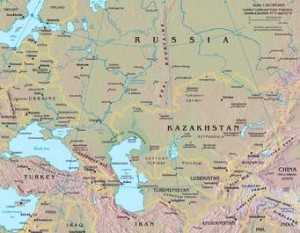
Hitler launched a massive invasion of the Soviet Union on June 22, with over 3 million men. He was highly successful, due in large part to a disorganized and unsuspecting Russian army. By July 8, they had captured 280,000 Soviet prisoners and almost 2,600 tanks were destroyed. The army was already a couple of hundred miles inside Soviet territory. Stalin was in a panic. He was so angry that he began executing generals who had failed to stop the invaders.
Halder, who was Hitler’s chief of staff, had been keeping a diary of the day-to-day decision making process. As time went on, Hitler became emboldened by his successes in Russia. Halder recorded that the “Fuhrer is firmly determined to level Moscow and Leningrad to the ground.” Halder also records the reality of Hitler’s underestimation of the Russian army’s numbers and the bitter fighting within Hitler’s own armies about strategy. Halder and some of the others wanted to make straight for the capital, Moscow. But Hitler wanted to meet up with Field Marshal Wilhelm Leeb’s army group, 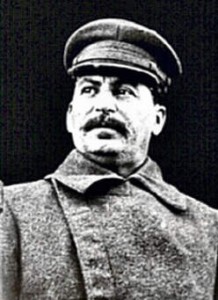 which was making its way toward Leningrad. And Hitler was, after all, in charge. But, the advantage Hitler had against the Soviets would not last very long. Winter was approaching and so was the advantage such conditions would give the Russians. The Russians were used to the severe Russian winters, and Hitler’s men were not. Like Napoleon before them, the Germans would soon find that they weren’t prepared for the Russian winter, and subsequent winters. And yet, Hitler thought he had learned from Napoleon. He ordered his troops to hold their ground. Which meant that during the Winter War, the German army was not able to pull back to more defensible positions. Consequently, the Russians were able to launch a series of counter-attacks during that first winter. These attacks cutoff some German forces, inflicted worse casualties than the Germans could inflict, but more importantly allowed the Russians to rebuild their army. The winter months proved to be just as detrimental for Hitler as they had for Napoleon. He was insane to even try such an attack.
which was making its way toward Leningrad. And Hitler was, after all, in charge. But, the advantage Hitler had against the Soviets would not last very long. Winter was approaching and so was the advantage such conditions would give the Russians. The Russians were used to the severe Russian winters, and Hitler’s men were not. Like Napoleon before them, the Germans would soon find that they weren’t prepared for the Russian winter, and subsequent winters. And yet, Hitler thought he had learned from Napoleon. He ordered his troops to hold their ground. Which meant that during the Winter War, the German army was not able to pull back to more defensible positions. Consequently, the Russians were able to launch a series of counter-attacks during that first winter. These attacks cutoff some German forces, inflicted worse casualties than the Germans could inflict, but more importantly allowed the Russians to rebuild their army. The winter months proved to be just as detrimental for Hitler as they had for Napoleon. He was insane to even try such an attack.
 With our nation’s Independence Day upon us, I find myself, like many other Americans, in a rather weary and confused state. So much about our country has changed, that it has almost become unrecognizable to me. The United States of America has always been known as the land of the free and the home of the brave, but now it seems that we are becoming the land of the free, only if we agree with what a select few want, and as for the brave, well it’s becoming very much out of style to stand up for our beliefs, values, or even for our country. I’m not picking on any one group here, but rather I find myself feeling quite sad that the sense of pride we have always felt for our nation is suddenly gone…at least in the minds of some people. I know that everyone really has a right to live their life in the way that they want to, but the problem is that lately everyone wants to tell everyone else how to believe. With that in mind, I thought it fitting to remind people about why our ancestors came here in the first place.
With our nation’s Independence Day upon us, I find myself, like many other Americans, in a rather weary and confused state. So much about our country has changed, that it has almost become unrecognizable to me. The United States of America has always been known as the land of the free and the home of the brave, but now it seems that we are becoming the land of the free, only if we agree with what a select few want, and as for the brave, well it’s becoming very much out of style to stand up for our beliefs, values, or even for our country. I’m not picking on any one group here, but rather I find myself feeling quite sad that the sense of pride we have always felt for our nation is suddenly gone…at least in the minds of some people. I know that everyone really has a right to live their life in the way that they want to, but the problem is that lately everyone wants to tell everyone else how to believe. With that in mind, I thought it fitting to remind people about why our ancestors came here in the first place.
When our forefathers left England, it was to get away from a government that made it a treasonous act to separate from the Church of England. The people who did not agree with the teachings of the Church of England had to leave or they would be killed. That was the reason that the First Amendment to our Constitution says, “Congress shall make no law respecting an establishment of religion, or prohibiting the free exercise thereof; or abridging the freedom of speech, or of the press; or the right of the people peaceably to assemble, and to petition the government for a redress of grievances.” These were very important parts of our 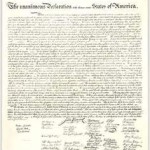 Constitution. The problem is that many people have forgotten those rights, or they have mixed up the meaning, thinking that we are not to have anything to do with religion in our government. That isn’t it at all. It says that the government is to stay out of our religious beliefs. That is not what is happening. Our current government is far too invasive in our religions.
Constitution. The problem is that many people have forgotten those rights, or they have mixed up the meaning, thinking that we are not to have anything to do with religion in our government. That isn’t it at all. It says that the government is to stay out of our religious beliefs. That is not what is happening. Our current government is far too invasive in our religions.
As time went on, England tried to usurp more and more authority over the young colonies. They tried to interfere with religion, economics, and politics. Even though we were a nation basically under them, we knew it could not continue much longer. It was decided that we needed to be independent from England. That was when we knew that we could not continue to be under this type of rule. So, why do we celebrate the 4th of July…Independence Day. We think of July 4, 1776, as a day that represents the Declaration of Independence and the birth of the United States of America as an independent nation. But it wasn’t on July 4, 1776 that the Continental Congress decided to declare independence. That was on July 2, 1776. It wasn’t the day we started the American Revolution either. That had happened back in April 1775. And it wasn’t the day Thomas Jefferson wrote the first draft of the Declaration of Independence. He did that in June 1776. It wasn’t even the date on which the Declaration was delivered to Great Britain. That didn’t happen until November 1776. It wasn’t even the date it was signed. That was August 2, 1776.
No, we celebrate the 4th of July, because that was the day that the Continental Congress approved the final 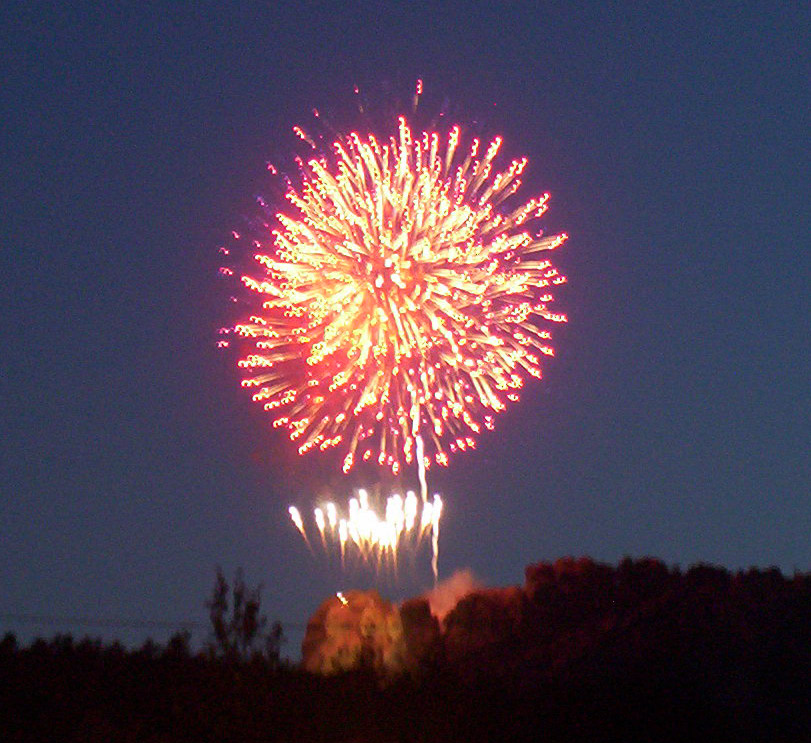 wording of the Declaration of Independence, in 1776. They’d been working on it for a couple of days after the draft was submitted on July 2nd and finally agreed on all of the edits and changes. That was the day that truly represents our Independence. Not the day it was accepted by Britain, but the day we decided to make it our own. That was the day we made freedom and independence our own. It was the day that we decided to live in peace together, with each man, woman, and child having certain rights that should never be denied them. I think some people in our country, and especially our leadership have forgotten that fact in their race to political correctness, anti-racism, and a thinly disguised attempt to control our religious rights.
wording of the Declaration of Independence, in 1776. They’d been working on it for a couple of days after the draft was submitted on July 2nd and finally agreed on all of the edits and changes. That was the day that truly represents our Independence. Not the day it was accepted by Britain, but the day we decided to make it our own. That was the day we made freedom and independence our own. It was the day that we decided to live in peace together, with each man, woman, and child having certain rights that should never be denied them. I think some people in our country, and especially our leadership have forgotten that fact in their race to political correctness, anti-racism, and a thinly disguised attempt to control our religious rights.

 There is a popular song by Miranda Lambert called “The House That Built Me.” It is a rather bittersweet song about visiting the house where she grew up, in and effort to find herself again. I suppose that it is very common to lose sight of self as the years go by, and life gets busier and busier. Sometimes we just find ourselves needing to regroup, to a degree. Of course, in the song, she really just wanted to get back in touch with her beginnings. I can understand that, since my sister, Cheryl Masterson, my mom Collene Spencer, and I took a trip back to Superior, Wisconsin, to reconnect with family members, the town, and the house where the first years of my life were spent. Of course, unlike Miranda Lambert, we didn’t ask to go into the house, although it might have been fun to do so, and unlike Miranda, I didn’t grow up in the house, but rather the first couple of years of my life. Nevertheless, standing there in front of the house, I found myself thinking about the home movies I had seen of our time there. They were good memories, and it felt good to be there to see that house that represented my beginning.
There is a popular song by Miranda Lambert called “The House That Built Me.” It is a rather bittersweet song about visiting the house where she grew up, in and effort to find herself again. I suppose that it is very common to lose sight of self as the years go by, and life gets busier and busier. Sometimes we just find ourselves needing to regroup, to a degree. Of course, in the song, she really just wanted to get back in touch with her beginnings. I can understand that, since my sister, Cheryl Masterson, my mom Collene Spencer, and I took a trip back to Superior, Wisconsin, to reconnect with family members, the town, and the house where the first years of my life were spent. Of course, unlike Miranda Lambert, we didn’t ask to go into the house, although it might have been fun to do so, and unlike Miranda, I didn’t grow up in the house, but rather the first couple of years of my life. Nevertheless, standing there in front of the house, I found myself thinking about the home movies I had seen of our time there. They were good memories, and it felt good to be there to see that house that represented my beginning.
My great aunt, Bertha Schumacher Hallgren and her sister, Elsa Schumacher Lawrence had the opportunity as teenagers to travel from their home in Fargo, North Dakota, to Minnesota. While there, they were not only able to see the house where they were born, but the actual room they were born in. Things are much different these days. Most people are born in a hospital, rather than at home, so we don’t necessarily think of the room we were born in, because there is almost no way to know exactly which one it was years later. Bertha and Elsa had such an amazing opportunity…one I suppose many of us might envy, if we thought about it very long. The time they lived in, combined with the kindness of the new owners, allowed them to take a small glimpse into their past. It was an event that affected Bertha so much, that she wrote about is years later. She too, had been a young girl when the family moved away, but unlike me, she was able to step back into the world, and feel what it was like in those early years.
No, I suppose you can’t really go home again, unless like my younger sisters, your parents stayed is the house where you grew up. In that case, while you have grown up, married, or moved out on your own, you still have 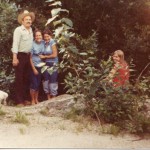
 those close ties to the home of your youth, and with it, the memories and values you grew up with. Yes, my older sister, Cheryl and I do have those memories too, we have still found ourselves wondering what our lives would have been like, and who we would have been if our parents had stayed in Wisconsin. I know things would have been different for sure, but in reality, all the changes that have gone on in our lives have turned out to be the best life for us anyway. So maybe, going back to a lost childhood home really makes little difference in the grand scheme of things afterall.
those close ties to the home of your youth, and with it, the memories and values you grew up with. Yes, my older sister, Cheryl and I do have those memories too, we have still found ourselves wondering what our lives would have been like, and who we would have been if our parents had stayed in Wisconsin. I know things would have been different for sure, but in reality, all the changes that have gone on in our lives have turned out to be the best life for us anyway. So maybe, going back to a lost childhood home really makes little difference in the grand scheme of things afterall.
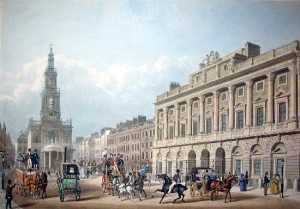 Anyone who has ever tried to trace their family history knows just how difficult it can be to find the records sometimes. Early families kept their records mostly in the family Bible, or some other type of record keeping book, and if the records weren’t kept where they were safe, or where the next generation knew to look for them, they were often lost. It seems that some nations were more ahead of the pack when it came to registering the people…where it was for a good purpose or not. Later it was only churches that kept records of these things.
Anyone who has ever tried to trace their family history knows just how difficult it can be to find the records sometimes. Early families kept their records mostly in the family Bible, or some other type of record keeping book, and if the records weren’t kept where they were safe, or where the next generation knew to look for them, they were often lost. It seems that some nations were more ahead of the pack when it came to registering the people…where it was for a good purpose or not. Later it was only churches that kept records of these things.
The Bible tells us in Luke 2:1-5, “And it came to pass in those days that a decree went out from Caesar Augustus that all the world should be registered. This census first took place while Quirinius was governing Syria. So all went to be registered, everyone to his own city. Joseph also went up from Galilee, out of the city of Nazareth, into Judea, to the city of David, which is called Bethlehem, because he was of the house and lineage of David, to be registered with Mary, his betrothed wife, who was with child.” In many way, I suppose it was from this point on that the Romans and Jews began to keep such clear records, although, according to the Bible and the lineage of Jesus told there, the Jews had kept very clear records before that. It was clear record keeping of this type that made it possible for families to know their heritage.
As I have searched for my own ancestors, I have found that in more modern times, such as the 1000 to 1700s, the record keeping was not so good. I don’t know if people were just more lax about it, or if there seemed to be no good place to store these things. I could also be that in cases where good records were kept, fire, flood, or some other natural disaster destroyed them later on. I find that to be such a sad state of affairs, because it can put up a wall between the genealogical researcher and the valuable information they are searching for.
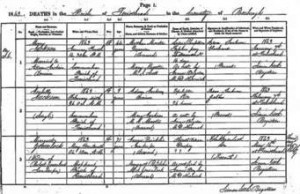
I guess I’m not the only person to ever feel that way, because on this day, July 1, 1837, England and Wales established the Civil Registration system to record births, marriages, and deaths. It is that same system that is used in Ancestry.com to provide valuable records used by genealogical researchers to this day. Of course, in the early days, the records were stored in volume after volume in some dusty corner of a courthouse or something. It was very hard to research family through that avenue, but with the invention of the internet, and the transfer of those records to it, the civil registration of births, marriages, and deaths has opened up many new doors in genealogical research.

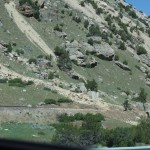 For a number of years now, Bob and I have made a trip to Thermopolis each year in early March in celebration of our wedding anniversary, which is March 1st. Driving through the Wind River Canyon that many times, I feel like I know the face of those canyon walls pretty well. Since rainy weather has dominated this Spring, many areas of the state of Wyoming and several other states, flooding is a word that we have all gotten used to hearing. Since our state has been in a relative draught for a number of years, the ground has had a hard time absorbing all that water that has been coming in. And then there is the fact that we have had a few fires in key areas around the state. That adds an additional danger to certain areas…one of which is the Wind River Canyon, which was hit with mudslides and rockslides earlier this year.
For a number of years now, Bob and I have made a trip to Thermopolis each year in early March in celebration of our wedding anniversary, which is March 1st. Driving through the Wind River Canyon that many times, I feel like I know the face of those canyon walls pretty well. Since rainy weather has dominated this Spring, many areas of the state of Wyoming and several other states, flooding is a word that we have all gotten used to hearing. Since our state has been in a relative draught for a number of years, the ground has had a hard time absorbing all that water that has been coming in. And then there is the fact that we have had a few fires in key areas around the state. That adds an additional danger to certain areas…one of which is the Wind River Canyon, which was hit with mudslides and rockslides earlier this year.
This morning, Bob and I decided to take a drive up to Thermopolis to see for ourselves, exactly how the canyon face had been changed by the mudslides. Our granddaughter, Shai Royce decided to come along to see it too. 
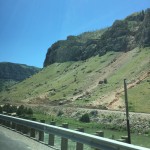 We had seen the pictures of it on television and on the internet when it happened, but you really can’t get a clear picture of something like that until you see it up close. So, after breakfast we set out. It was a nice drive up to the Wind River Canyon, and at first, it didn’t look so different, but then we got to the area where the main slides were. It was much different.
We had seen the pictures of it on television and on the internet when it happened, but you really can’t get a clear picture of something like that until you see it up close. So, after breakfast we set out. It was a nice drive up to the Wind River Canyon, and at first, it didn’t look so different, but then we got to the area where the main slides were. It was much different.
I expected it to look different, and it did, but what I didn’t expect was to have it occur to me that I was looking at the changing face of the canyon. I thought about how the canyon had changed over the years of its existence. The river made most of the changes that had taken place, slowly carving out the depth of it with erosion. Soon, its walls were high and filled with the hard rocks that had survived the erosion process. The trees grew along the face of the walls, and in time we all thought it wouldn’t change much, but rock and mudslides can change the face of those canyon walls overnight. I found myself thinking about how easy it was to pick out the slide path of each 
 slide area. The coloring of the upturned earth made it stand out as if it were florescent paint. I was able to see the complete path the mud and rocks took on their way down.
slide area. The coloring of the upturned earth made it stand out as if it were florescent paint. I was able to see the complete path the mud and rocks took on their way down.
I realized that this was just one event, but it didn’t matter, because I was looking at the changes brought about by time. This was the canyon’s changing face, caused by the effects of weather, water, wind, and fire to bring about an entirely new look to a canyon that had been there so long, looking, or so I thought, always the same. In reality, it was ever changing.
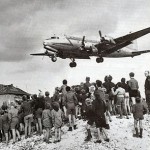 I think that every nation has opportunities to do what can be labeled as defining moments…situations when the nation dealt with an enemy or situation so well, that it can only be considered amazing. That was how the United States reacted to one of the most dramatic standoffs in the history of the Cold War. The Soviet Union decided to block off all road and rail traffic to and from West Berlin, Germany. The move was designed to basically starve the people into submission…or at least that was the plan. It was also a move that would be in defiance to all the other allies in Germany at the time. Unfortunately for the Soviet Union, the blockade turned out to be a horrible diplomatic move, but for the United States, it became a defining moment. The United States emerged from the confrontation with a renewed purpose and confidence, as well as a reputation for being a humanitarian nation.
I think that every nation has opportunities to do what can be labeled as defining moments…situations when the nation dealt with an enemy or situation so well, that it can only be considered amazing. That was how the United States reacted to one of the most dramatic standoffs in the history of the Cold War. The Soviet Union decided to block off all road and rail traffic to and from West Berlin, Germany. The move was designed to basically starve the people into submission…or at least that was the plan. It was also a move that would be in defiance to all the other allies in Germany at the time. Unfortunately for the Soviet Union, the blockade turned out to be a horrible diplomatic move, but for the United States, it became a defining moment. The United States emerged from the confrontation with a renewed purpose and confidence, as well as a reputation for being a humanitarian nation.
When World War II ended, Germany was divided into occupation zones. The United States, Great Britain, the Soviet Union, and eventually France were granted specific zones to occupy. Each nation was there to accept the surrender of Nazi forces and restore order. The Soviet Union occupied most of eastern Germany, and the other 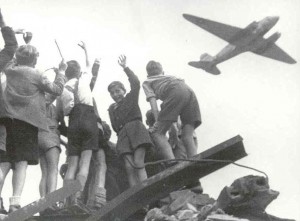 Allied nations occupied western Germany. The German capital of Berlin was divided into four sections as well. The differences between the United States and the Soviet Union were immediately evident. The Soviets were intent on thoroughly breaking the Germans…making them neutral and disarmed. Punishment was going to be at the top of the list. The United States saw things differently. They believed that the economic recovery of Western Europe depended of a strong, reunified Germany. The United States also felt that a rearmed Germany was going to be a stiff deterrent to further Soviet expansion into Western Europe. In May 1946, the Americans stopped reparations shipments from their zone to the Soviets. In December, the British and Americans combined their zones; the French joined some months later. The Soviets viewed these actions as a threat and issued more demands for more say in the economic future of Germany. On June 22, 1948, negotiations between the Soviets, Americans, and British broke down. On June 24, Soviet forces blocked the roads and railroad lines into West Berlin.
Allied nations occupied western Germany. The German capital of Berlin was divided into four sections as well. The differences between the United States and the Soviet Union were immediately evident. The Soviets were intent on thoroughly breaking the Germans…making them neutral and disarmed. Punishment was going to be at the top of the list. The United States saw things differently. They believed that the economic recovery of Western Europe depended of a strong, reunified Germany. The United States also felt that a rearmed Germany was going to be a stiff deterrent to further Soviet expansion into Western Europe. In May 1946, the Americans stopped reparations shipments from their zone to the Soviets. In December, the British and Americans combined their zones; the French joined some months later. The Soviets viewed these actions as a threat and issued more demands for more say in the economic future of Germany. On June 22, 1948, negotiations between the Soviets, Americans, and British broke down. On June 24, Soviet forces blocked the roads and railroad lines into West Berlin.
When the Soviets blocked the roads and railways, the Americans were furious. The question now became, what to do about it. Inside West Berlin there was panic. The people thought they were going to die. For a few tense 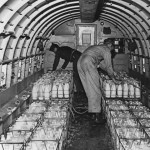 days, the world waited to see what the United States would do next. Then, just two days after the Soviets began the blockade, the United States reacted in a way that was so unexpected, and in the end, it would be a way that brought about that defining moment, and really set the stage for the humanitarian reputation the United States has today. A massive airlift of supplies was sent into West Berlin in what would become one of the greatest logistical efforts in history. For the Soviets, the escapade quickly became a diplomatic embarrassment. They looked like an international bully that was trying to starve men, women, and children into submission. The successful American airlift merely served to accentuate the technological superiority of the United States over the Soviet Union. On May 12, 1949, the Soviets officially ended the blockade.
days, the world waited to see what the United States would do next. Then, just two days after the Soviets began the blockade, the United States reacted in a way that was so unexpected, and in the end, it would be a way that brought about that defining moment, and really set the stage for the humanitarian reputation the United States has today. A massive airlift of supplies was sent into West Berlin in what would become one of the greatest logistical efforts in history. For the Soviets, the escapade quickly became a diplomatic embarrassment. They looked like an international bully that was trying to starve men, women, and children into submission. The successful American airlift merely served to accentuate the technological superiority of the United States over the Soviet Union. On May 12, 1949, the Soviets officially ended the blockade.
 While Bob and I were in San Francisco a number of years ago, we had the opportunity to ride the cable cars there. Cable cars, or trolley cars are pretty much a novelty in most places, but they used to be pretty commonplace. There are still many cities that operate a modern day version of the cable car, which is reality is more like a inter-city train than a cable car. But, the traditional cable car, street car, or trolley car were really very different from their modern day cousins, and the ride on the older version was really a lot of fun. Many cities had cable car systems that few people even remember. New York for example, has a huge subway system, but this came to be after the trolley system became problematic. Now, the old trolley system is just a faint memory, and in reality, one that is not very well known.
While Bob and I were in San Francisco a number of years ago, we had the opportunity to ride the cable cars there. Cable cars, or trolley cars are pretty much a novelty in most places, but they used to be pretty commonplace. There are still many cities that operate a modern day version of the cable car, which is reality is more like a inter-city train than a cable car. But, the traditional cable car, street car, or trolley car were really very different from their modern day cousins, and the ride on the older version was really a lot of fun. Many cities had cable car systems that few people even remember. New York for example, has a huge subway system, but this came to be after the trolley system became problematic. Now, the old trolley system is just a faint memory, and in reality, one that is not very well known.
In fact, problematic was maybe an understatement when it comes to reality concerning the cable car system. Once the automobile became a common item in the American household, there were a number of incidences involving the automobile and the trolley 
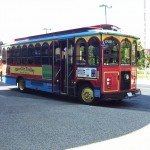 or cable car. I’m sure you can guess who won that battle. The trolley or cable car was bigger, and it was after all, limited as to where it could operate, while the automobile was free to go where it chose…pretty much anyway. Nevertheless, there were collisions between the two forms of transportation…as well as traffic jams at times. Eventually, with automobiles becoming so commonplace, the trolley or cable car began to go by the wayside…Finally ending up as the novelty it is today.
or cable car. I’m sure you can guess who won that battle. The trolley or cable car was bigger, and it was after all, limited as to where it could operate, while the automobile was free to go where it chose…pretty much anyway. Nevertheless, there were collisions between the two forms of transportation…as well as traffic jams at times. Eventually, with automobiles becoming so commonplace, the trolley or cable car began to go by the wayside…Finally ending up as the novelty it is today.
When my daughter, Corrie Petersen and I were in Minneapolis in August of 2005, we had the opportunity to take a city tour on an old trolley car. Of course this one was of the variety that had come out when the automobile came out. It needed no cable, but was rather a trolley car bus, I suppose. The seats and the windows were definitely authentic trolley car though. The tour was a lot of fun…probably mostly because it was a novelty trip. Bob and I had an additional opportunities in Alaska, on a tour of Anchorage. I really like the 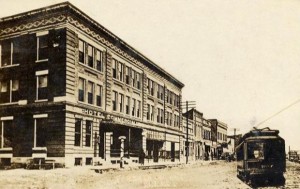 trolley car tours.
trolley car tours.
The other day I was looking at some old pictures of Montana history, and I came across something about Forsyth that I didn’t know about before. The little town of Forsyth, population about 1400 people in 1914, with one maim street is a place that you can easily walk across in just a few minutes. Nevertheless, the little town of Forsyth, Montana had a cable car in 1914, so people could ride the length of that main street…probably eight to twelve blocks. I was amazed to learn of that little tidbit of Forsyth history, which was the place where many of Bob’s family members lived, and where many still live today.
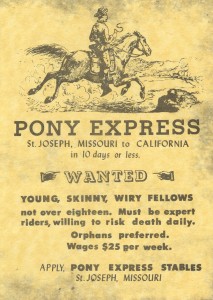 With this year marking the 155th anniversary of the Pony Express, there is much celebration in the arena of those who love to celebrate the history of the Pony Express. Every year the first couple of weeks in June find many riders marking the amazing accomplishments of the Pony Express by riding the route once again. The riders follow the original route from Saint Louis, Missouri to Sacramento, California. They travel on horseback, just as the original riders did, and they ride 24 hours a day, just as the riders before them. Today, June 20, 2015 puts them traveling through the state of Wyoming. They left Atlantic City, Wyoming June 20, 3:00am, Farson, Wyoming at 9:00am, Green River Crossing at 11:00am, Granger, Wyoming at 12:30pm, Uinta County Line at 1:00pm, Fort Bridger, Wyoming at 4:00pm, and cross the Wyoming/Utah state line at 9:00pm, arriving in This Is The Place Heritage Park in Utah in time to depart on Sunday, June 21, 3:30am, to continue on to their destination of Sacramento, California with a planned arrival at Old Sacramento, California on Thursday, June 25, 11:30am.
With this year marking the 155th anniversary of the Pony Express, there is much celebration in the arena of those who love to celebrate the history of the Pony Express. Every year the first couple of weeks in June find many riders marking the amazing accomplishments of the Pony Express by riding the route once again. The riders follow the original route from Saint Louis, Missouri to Sacramento, California. They travel on horseback, just as the original riders did, and they ride 24 hours a day, just as the riders before them. Today, June 20, 2015 puts them traveling through the state of Wyoming. They left Atlantic City, Wyoming June 20, 3:00am, Farson, Wyoming at 9:00am, Green River Crossing at 11:00am, Granger, Wyoming at 12:30pm, Uinta County Line at 1:00pm, Fort Bridger, Wyoming at 4:00pm, and cross the Wyoming/Utah state line at 9:00pm, arriving in This Is The Place Heritage Park in Utah in time to depart on Sunday, June 21, 3:30am, to continue on to their destination of Sacramento, California with a planned arrival at Old Sacramento, California on Thursday, June 25, 11:30am.
The Pony Express is one of the few services that achieved so much recognition in such a short history. The service opened officially on April 3, 1860, when riders left simultaneously from St. Joseph, Missouri, and Sacramento, California. The first westbound trip was made in 9 days and 23 hours and the eastbound journey in 11 days and 12 hours. The pony riders covered 250 miles in a 24-hour day. Eventually, it gre to more than 100 stations, 80 riders, and 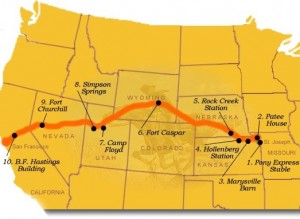 between 400 and 500 horses. Their delivery record was amazing in that during their run, only one mail delivery was lost. The service lasted only 19 months until October 24, 1861, when the completion of the Pacific Telegraph line ended the need for its existence.
between 400 and 500 horses. Their delivery record was amazing in that during their run, only one mail delivery was lost. The service lasted only 19 months until October 24, 1861, when the completion of the Pacific Telegraph line ended the need for its existence.
While it’s time was short, the Pony Exoress has become a beloved historic icon. In fact, in many ways, the service the Pony Express provided, makes our current mail service pale by comparison. I realize that there are many very good mail service workers, but there are also many who couldn’t care less about the mail they deliver, or the people sending or receiving it. They are, unfortunately, among the sorry generation of people who think a paycheck shouldn’t necessarily depend on the work performed, or not performed. That mentality was totally foreign to the Pony Express riders, who risked their very lives every day to make sure that communication in this great nation was possible. Happy 155th Anniversary to the Pony Express.

